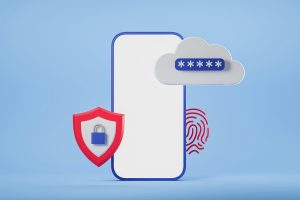Who is responsible for treating bugs in a rental property in Alberta?
Dealing with pest infestations can be unsettling, but it’s vital to be aware of your rights and obligations as a tenant or landlord when facing such challenges. Alberta has clear guidelines in place to ensure tenants can live in a clean and pest-free environment while addressing these issues effectively.
Landlord’s Duty
As a tenant, you have a right to live in a clean and pest-free environment. Your landlord is primarily responsible for ensuring that your rental property complies with public health requirements at all times. Under Alberta’s Minimum Housing and Health Standards, your landlord must make sure that the rental property is free from insect and rodent infestations. This means they should take the necessary steps to prevent and address these issues promptly.
Tenant’s Role
Tenants also have a crucial role in preventing and addressing pest issues. While the primary responsibility for treatment rests with the landlord, tenants are expected to keep the property reasonably clean. This includes proper hygiene practices and eliminating factors that attract pests. Tenants should also cooperate with any pest control treatment initiated by the landlord and follow the instructions provided by the exterminator.
What to Do If You Encounter Pest Problems in Alberta?
If you find yourself facing pest problems in your rental property, follow these steps:
1. Notify the Landlord: Your first action should be to notify your landlord in writing about the pest problem. It’s essential to provide a clear and detailed description of the issue.
2. Contact Alberta Health Services: If your landlord fails to address the problem, you can contact Alberta Health Services, specifically the Environmental Public Health department. You can reach them by calling Health Link at 811 to speak with a health inspector. They will investigate the situation and determine whether the landlord is in violation of health standards.
3. Health Inspector’s Role: The health inspector has the authority to order the landlord to take action to resolve the pest problem. Importantly, the law protects tenants from eviction based on complaints made to Environmental Public Health.
Enforcement and Cost Responsibilities
If a health inspector confirms the presence of an insect or rodent infestation and the landlord still doesn’t act, you can take further action. Options include applying to Alberta Court of Justice or the Residential Tenancy Dispute Resolution Service to end the tenancy or serving the landlord with a 14-day notice of your intent to end the tenancy. This demonstrates that the law is on your side in ensuring a safe and pest-free living environment.
Regarding the cost of pest treatment, the responsibility may vary depending on the circumstances. If the landlord believes that the tenant should pay for the treatment, they may issue a bill or deduct the cost from the tenant’s security deposit. However, the final decision on who should bear the cost will be made by a judge or tenancy dispute officer based on the evidence presented.
In conclusion, both tenants and landlords in Alberta have well-defined rights and responsibilities when it comes to addressing pest issues in rental properties. By understanding and following these guidelines, you can ensure a clean, safe, and pest-free living environment.
Remember, if you encounter pest problems in your rental property, it’s essential to document all communication and follow the proper legal procedures to protect your rights and well-being. If you’re unsure about how to proceed or have specific questions, consider seeking guidance from a legal professional or the local housing authority to navigate the situation effectively. Your health and comfort in your rental property are paramount, and the law is designed to protect them.
For more information and additional resources, you can visit the Alberta Residential Landlord Association’s Bed Bug Resources.
Check out our blog for more renter tips!








